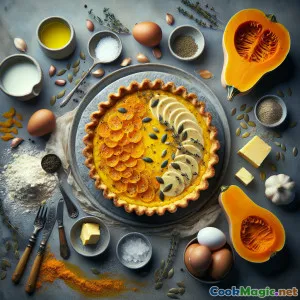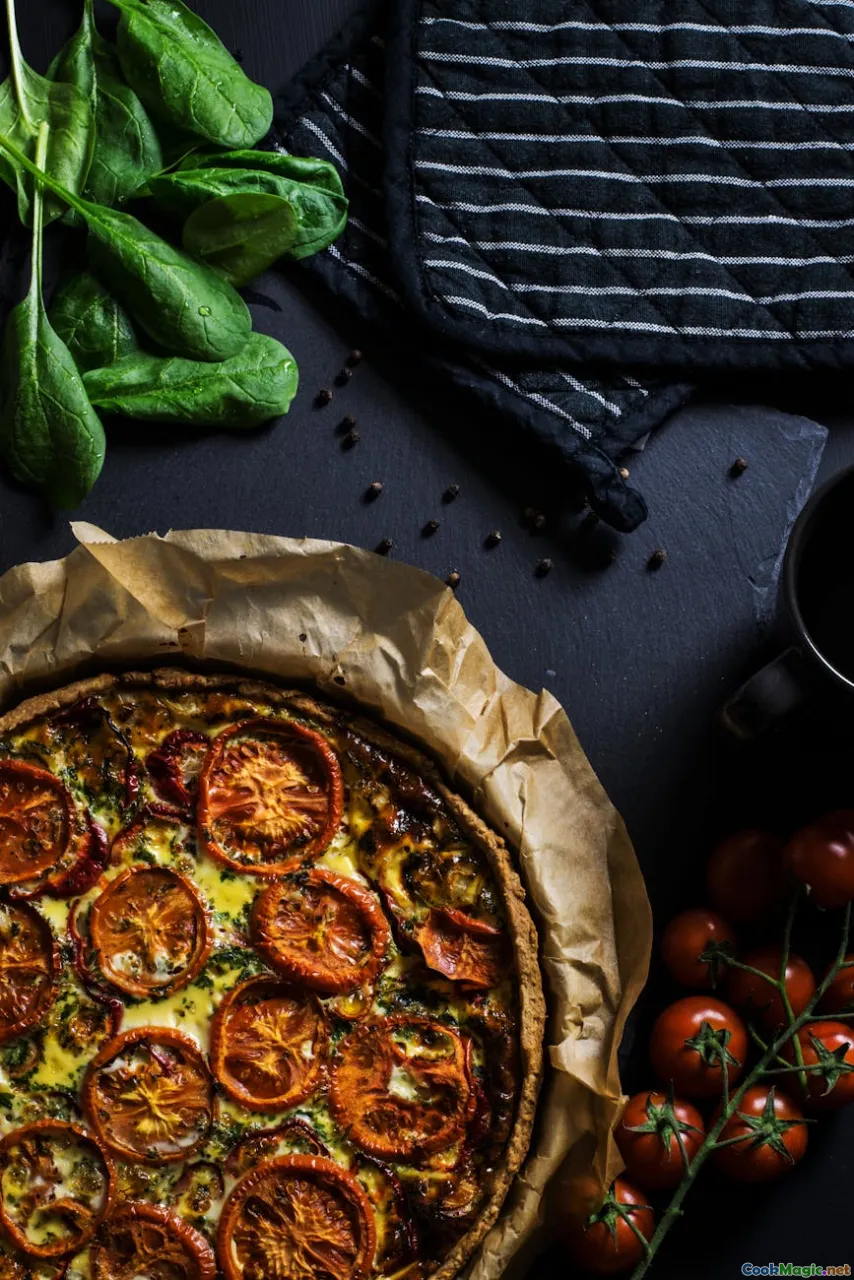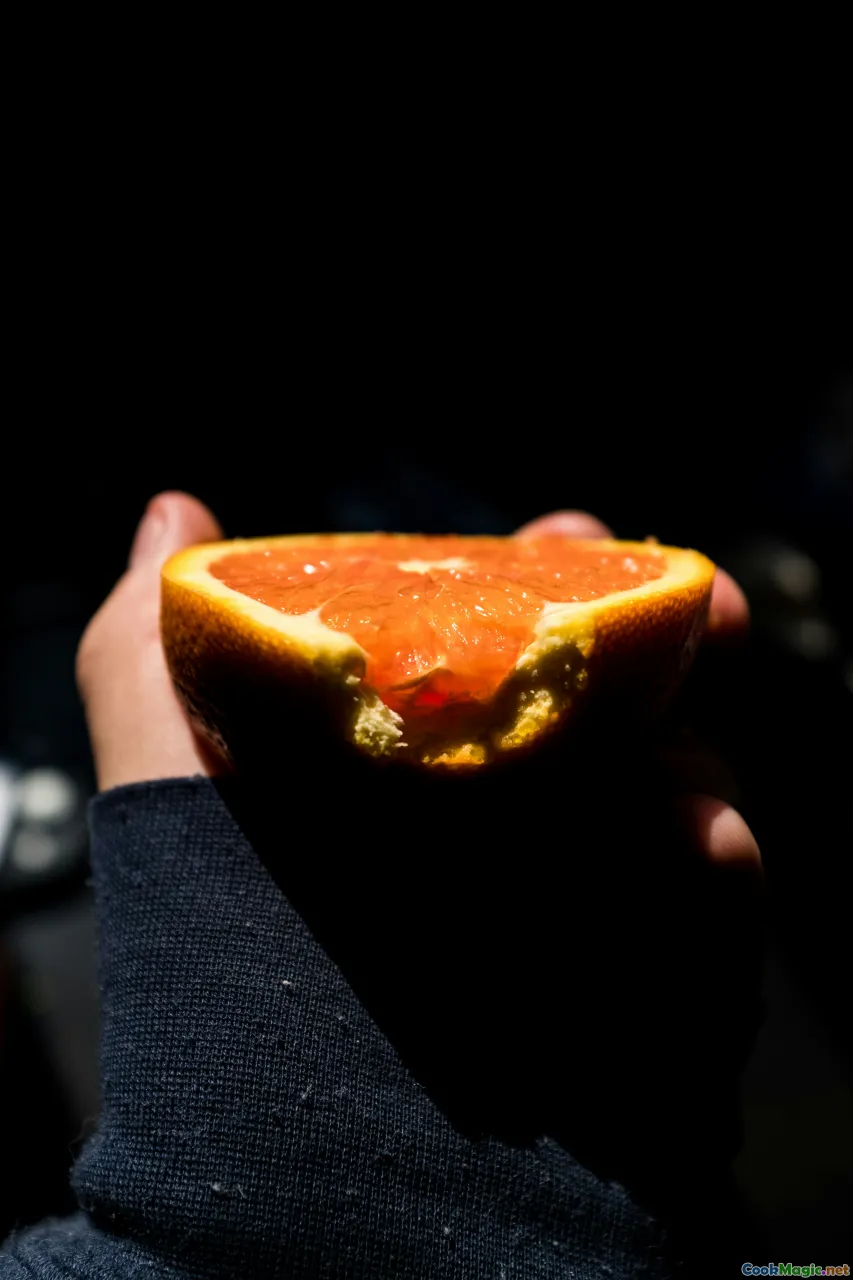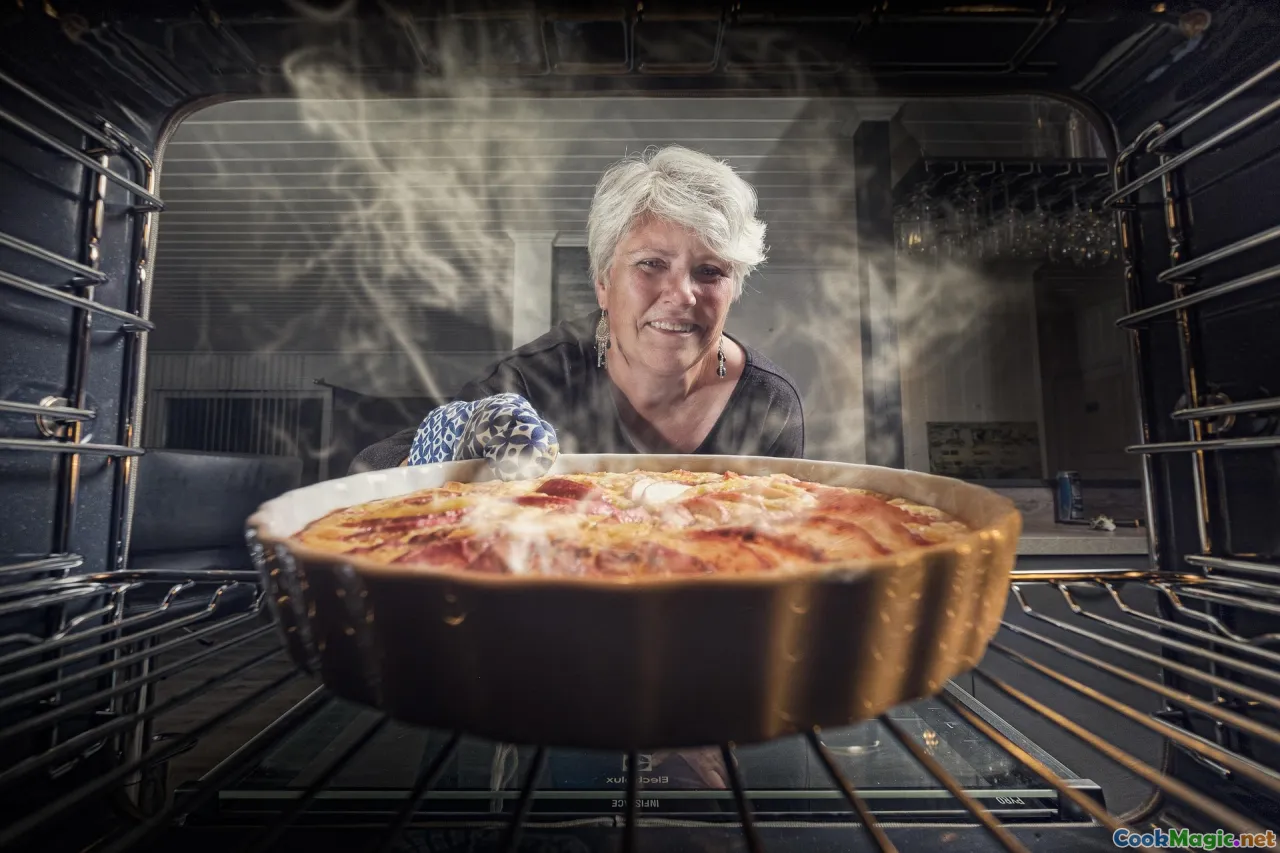
호박과 콜로니아 치즈의 짭짤한 타르트
(Pumpkin and Queso Colonia Savory Tart)
(0 리뷰)재료
-
800 grams 버터넛 호박 (pumpkin)
(Peeled, seeded, cut into 2 cm cubes; kabocha works too)
-
2 tbsp 올리브 오일
(For roasting and sautéing)
-
1.25 tsp 고운 바다 소금
(Divided for crust and filling)
-
0.5 tsp 흑후추
(갓 간)
-
250 grams 다목적 밀가루
(For the shortcrust pastry)
-
125 grams 무염 버터
(Cold, cut into 1 cm cubes)
-
1 tsp 사과 식초
(Tenderizes the dough)
-
4 tbsp 얼음 물
(Add 3–5 tbsp as needed until dough just holds)
-
1 medium 양파
(잘게 썬)
-
2 cloves 마늘
(다진)
-
1 tsp 신선한 타임
(Or 1/2 tsp dried thyme)
-
0.25 tsp 간 육두구
(가능하다면 갓 간 것)
-
0.5 tsp 훈제 파프리카
(은은한 훈제 풍미를 더합니다)
-
3 large 계란
(실온)
-
120 ml 생크림
(Also called double cream)
-
60 ml 전유
(Lightens the custard)
-
200 grams 콜로니아 치즈
(Coarsely grated; a young semi-hard Uruguayan cheese)
-
2 tbsp 호박씨(펩타스)
(For crunchy topping)
-
20 grams 간 파르메산 치즈
(Optional extra umami if cheese is very mild)
-
0.5 tsp 레몬 제스트
(Brightens pumpkin sweetness)
(Peeled, seeded, cut into 2 cm cubes; kabocha works too)
(For roasting and sautéing)
(Divided for crust and filling)
(갓 간)
(For the shortcrust pastry)
(Cold, cut into 1 cm cubes)
(Tenderizes the dough)
(Add 3–5 tbsp as needed until dough just holds)
(잘게 썬)
(다진)
(Or 1/2 tsp dried thyme)
(가능하다면 갓 간 것)
(은은한 훈제 풍미를 더합니다)
(실온)
(Also called double cream)
(Lightens the custard)
(Coarsely grated; a young semi-hard Uruguayan cheese)
(For crunchy topping)
(Optional extra umami if cheese is very mild)
(Brightens pumpkin sweetness)
영양 정보
- 인분: 8
- 1인분 크기: 1조각 (150g)
- Calories: 440 kcal
- Carbohydrates: 0 g
- Protein: 12 g
- Fat: 27 g
- Fiber: 3 g
- Sugar: 4 g
- Sodium: 520 mg
- Cholesterol: 95 mg
- Calcium: 280 mg
- Iron: 1.8 mg
조리법
-
1 - Heat oven and prep pan:
Preheat oven to 200°C (400°F). Lightly grease a 23 cm (9-inch) tart tin with a removable base and set aside.
-
2 - Roast the pumpkin:
Toss pumpkin cubes with 1 tbsp olive oil and a pinch of salt. Spread on a lined tray and roast 25–30 minutes until tender and lightly caramelized. Cool slightly, then mash until smooth.
-
3 - Make the shortcrust:
In a bowl, whisk flour with 1/2 tsp salt. Rub in cold butter with fingertips until sandy with pea-sized bits. Drizzle vinegar, then ice water 1 tbsp at a time, just until it clumps when squeezed.
-
4 - Chill the Dough:
Form dough into a disk, wrap, and chill 30 minutes to relax gluten and firm butter. This prevents shrinkage and yields flakiness.
-
5 - Roll and line the tin:
On a lightly floured surface, roll dough to 3 mm thick. Fit into tart tin, pressing gently. Trim excess and dock base with a fork.
-
6 - Blind bake:
Line crust with parchment and fill with pie weights. Bake at 190°C (375°F) for 12 minutes, remove weights, and bake 5 more minutes until dry and just golden.
-
7 - Sauté Aromatics:
Warm remaining 1 tbsp olive oil in a skillet over medium heat. Sauté onion 5 minutes until translucent, add garlic, thyme, paprika, and pepper; cook 1 minute more. Cool.
-
8 - Season the pumpkin:
Combine mashed pumpkin with sautéed aromatics, nutmeg, lemon zest, and 1/4 tsp salt. Taste and adjust seasoning.
-
9 - Make the custard:
Whisk eggs with cream and milk until smooth and slightly foamy. Stir in a pinch of salt and pepper.
-
10 - Assemble the filling:
Spread seasoned pumpkin in the blind-baked crust. Sprinkle Queso Colonia (and Parmesan if using). Pour custard over; tap tin to release bubbles. Top with pumpkin seeds.
-
11 - Bake the Tart:
Bake at 180°C (356°F) for 28–35 minutes until the center is set with a slight wobble and the top is golden and puffed.
-
12 - Rest, slice, and serve:
Cool 10–15 minutes to set custard. Unmold, slice with a serrated knife, and serve warm or at room temperature.
Preheat oven to 200°C (400°F). Lightly grease a 23 cm (9-inch) tart tin with a removable base and set aside.
Toss pumpkin cubes with 1 tbsp olive oil and a pinch of salt. Spread on a lined tray and roast 25–30 minutes until tender and lightly caramelized. Cool slightly, then mash until smooth.
In a bowl, whisk flour with 1/2 tsp salt. Rub in cold butter with fingertips until sandy with pea-sized bits. Drizzle vinegar, then ice water 1 tbsp at a time, just until it clumps when squeezed.
Form dough into a disk, wrap, and chill 30 minutes to relax gluten and firm butter. This prevents shrinkage and yields flakiness.
On a lightly floured surface, roll dough to 3 mm thick. Fit into tart tin, pressing gently. Trim excess and dock base with a fork.
Line crust with parchment and fill with pie weights. Bake at 190°C (375°F) for 12 minutes, remove weights, and bake 5 more minutes until dry and just golden.
Warm remaining 1 tbsp olive oil in a skillet over medium heat. Sauté onion 5 minutes until translucent, add garlic, thyme, paprika, and pepper; cook 1 minute more. Cool.
Combine mashed pumpkin with sautéed aromatics, nutmeg, lemon zest, and 1/4 tsp salt. Taste and adjust seasoning.
Whisk eggs with cream and milk until smooth and slightly foamy. Stir in a pinch of salt and pepper.
Spread seasoned pumpkin in the blind-baked crust. Sprinkle Queso Colonia (and Parmesan if using). Pour custard over; tap tin to release bubbles. Top with pumpkin seeds.
Bake at 180°C (356°F) for 28–35 minutes until the center is set with a slight wobble and the top is golden and puffed.
Cool 10–15 minutes to set custard. Unmold, slice with a serrated knife, and serve warm or at room temperature.
호박과 콜로니아 치즈의 짭짤한 타르트 :에 대한 자세한 정보
Overview
Tarta de Calabaza y Queso Colonia blends the natural sweetness of roasted pumpkin with the creamy, mellow character of Uruguay’s beloved Queso Colonia, all cradled in a flaky, buttery shortcrust. The result is a savory tart that straddles comfort and elegance: rustic enough for a weeknight supper yet refined for brunch spreads and holiday tables. The pumpkin brings body and a golden hue, while the cheese lends gentle lactic sweetness and a supple melt that never overwhelms. Blind baking the crust keeps the base crisp, and a light custard ties everything into custardy, sliceable perfection.
Ingredient Spotlight
- Queso Colonia: A semi-hard Uruguayan cheese with mild, slightly sweet notes, somewhat akin to young Gouda or Edam. It melts beautifully without becoming greasy. If you can’t find it, a young Gouda, Edam, or mild provolone makes a sensible stand-in.
- Pumpkin: Butternut or kabocha roast up dense and velvety. Roasting concentrates flavor and evaporates excess moisture, crucial for a non-soggy tart.
- Nutmeg and Smoked Paprika: Nutmeg highlights pumpkin’s sweetness, while smoked paprika adds a whisper of campfire aroma—subtle, not overpowering.
- Shortcrust: A classic 3-2-1 ratio (roughly) of flour, fat, and liquid yields structure and tenderness. A splash of cider vinegar inhibits gluten development for extra flake.
Technique Tips
- Keep it cold: Cold butter equals flakes. Chill after mixing, and pop the lined tin in the fridge while the oven heats for even better lamination.
- Blind bake properly: Weights prevent puffing, and a brief second bake dries the base. This step is key because pumpkin custard is moist.
- Control moisture: Roast pumpkin until lightly caramelized, then mash. If it seems wet, spread it back on the tray for a few minutes to steam off excess moisture.
- Set, don’t scramble: Bake until the custard just barely wobbles in the center. It will finish setting off-heat, staying silky rather than curdled.
- Season in layers: Salt the pumpkin mixture before adding the custard and cheese. Taste and adjust—cheese saltiness varies widely.
Make-Ahead and Variations
- Make-ahead: The crust can be made 2 days ahead and refrigerated, or frozen for a month. The tart itself holds well for 24 hours; rewarm at 150°C (300°F) for 10–12 minutes.
- Cheese swaps: Young Gouda, Edam, Havarti, or a mild Colby are closest to Queso Colonia. For a bolder twist, blend 70% Colonia with 30% semi-cured Manchego.
- Herb accents: Thyme is classic; sage or oregano bring different herbal tones. Fresh herbs are best added off the heat to preserve aroma.
- Texture toppings: A sprinkle of pumpkin seeds adds crunch; toasted walnuts or almonds play nicely too.
- Gluten-free: Use your favorite gluten-free shortcrust blend, or bake the filling in an oiled, rice-and-quinoa crust for a nutty twist.
Serving Suggestions and Pairings
Serve warm with a crisp salad—think shaved fennel, arugula, and orange—to brighten the tart’s richness. For drinks, try a lightly oaked Chardonnay, a Uruguayan Albariño, or a dry cider. Yerba mate, enjoyed widely in Uruguay, also makes a wonderful, earthy counterpoint.
History and Cultural Notes
Queso Colonia hails from Uruguay’s department of Colonia, where European dairy traditions took root in the 19th century. Immigrant know-how met fertile pastures, producing cheeses with accessible, family-friendly profiles. While sweet pumpkin treats are common across Latin America, savory pumpkin tarts and pies echo home-style cooking—humble, seasonal, and adaptable. This tart celebrates that spirit, framing a local cheese in a format familiar across the Río de la Plata region: a simple tart that feeds a crowd and welcomes whatever’s fresh and affordable.
Sustainability and Substitutions
- Use seasonal squash: Buying pumpkin or squash in season not only tastes better but reduces transport-related impact.
- Zero-waste aromatics: Save onion skins and herb stems for a future vegetable stock.
- Cheese rinds: Keep rinds from hard cheeses to enrich broths—though Queso Colonia is usually rind-light, Parmesan rinds are classic stock boosters.
- Can’t find Colonia? Young Gouda or Edam offers the nearest flavor and melt, keeping the tart’s profile generous and mellow.
Troubleshooting
- Soggy base: Either under-roasted pumpkin or insufficient blind bake is usually to blame. Dry out the pumpkin puree and extend the second blind-bake phase by 3–5 minutes.
- Crust shrinking: Dough was overworked or under-chilled. Rest well, roll gently, and avoid stretching when fitting into the tin.
- Watery custard: Don’t exceed the recommended milk/cream ratio; dairy with lower fat content can weep. A minute or two longer in the oven helps if it’s still jiggly.
Final Thoughts
Tarta de Calabaza y Queso Colonia is a graceful union of comfort and craft. It’s easy to love, flexible with pantry swaps, and rooted in a distinct Uruguayan dairy tradition. Whether you serve it as a centerpiece brunch dish, a cozy dinner with salad, or a festive holiday side, its gentle sweetness and creamy, cheesy depth make it a reliable crowd-pleaser. And like all good tarts, it’s just as delightful the next day—if any remains.



















